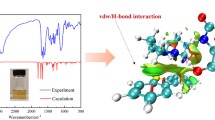Abstract
Extraction of sulfur compounds from oil and petroleum products is a high priority task associated with tightening of the criteria of fuel quality control, negative impact of sulfur on the processing and storage of crude oil, and environmental safety, as well as widespread use of organosulfur substances in different industries. The selectivity of several organic and inorganic extractants (methanol, N,N-dimethylformamide, acetonitrile, 15% NaOH, PEG 4000, PEG 200, diethylene glycol, monoethanolamine, dimethylacetamide, n‑methylpyrrolidone) in relation to thiophene, dibenzothiophene, thiophenol, dodecanethiol, and methyl sulfide was studied for model solutions of organic sulfur compounds in n-heptane and n-octane. Extraction was carried out under static conditions. The sulfur content in the initial sample and in the sample after extraction was determined by means of a SPECTROSCAN S X-ray fluorescence analyzer. Chromatographic analysis of the samples was performed on an Agilent gas chromatograph with a mass-selective quadrupole detector. The selectivity of the studied extractants in relation to the studied groups of sulfur compounds was assessed through recovery (%) of a particular sulfur compound. It is shown that acetonitrile, N,N-dimethylformamide, dimethylacetamide, and n-methylpyrrolidone are the most effective extractants for thiophene extraction. Methanol, N,N-dimethylformamide, acetonitrile, PEG200, diethylene glycol, monoethanolamine, dimethylacetamide, and n-methylpyrrolidone are capable of extracting a wide range of organosulfur compounds from model solutions. Aqueous solutions of PEG 200 and PEG 4000 provide less than 11% extraction of organosulfur compounds, whereas 15% NaOH solution and a mixture of 50% NaOH : ethanol (1 : 2) are selective extractants for aliphatic mercaptans and provide up to 99% extraction of thiophenol and dodecanthiol, respectively. It was found that n-methylpyrrolidone, dimethylacetamide, and N,N-dimethylformamide have the highest extraction capacity among the studied extractants. A series of studies gives ground to propose a possible extraction scheme for recovery of mercaptans from a mixture of organosulfur compounds.
Similar content being viewed by others
Notes
Akopyan, A.V., Oxidative desulfurization of carbohydrate high-grade raw materials with hydrogen peroxide in the presence salts of transition metals, Cand. Sci. (Chem.) Dissertation, Moscow: Moscow State Univ., 2015.
REFERENCES
Siraeva, I.N. and Lyapina, N.K., Sulphurous compounds of various types of oils, Bashkir. Khim. Zh., 2011, vol. 18, no. 1, pp. 135–139.
Akhmetova, V.R. and Kunakova, R.V., The development of the chemistry of organic sulfur compounds in Ufa: from petroleum sulphides to medicinal chemistry and metal complex analysis, Izv. Ufim. Nauchn. Tsentra, Ross. Akad. Nauk, 2017, no. 1, pp. 112–119.
Savonina, E.Yu., Maryutina, T.A., and Katasonova, O.N., Determination of microelements in oil by combined sample preparation technique, Inorg. Mater., 2016, vol. 53, no. 14, pp. 1448–1453. https://doi.org/10.1134/S0020168517140151
Lur’e, M.A. and Shmidt, F.K., Sulfur and metal-content, carbon and sulfur, and metal-content, carbon and sulfur isotopy of oils as genetic characteristics, Glubinnaya Neft’, 2013, vol. 1, no. 4, pp. 448–459.
Arystanbekova, S.A., Lapina, M.S., and Volynskii, A.B., Determination of individual sulfur-containing compounds in liquid hydrocarbon raw materials and their processing products by gas chromatography, J. Anal. Chem., 2017, vol. 72, no. 5, pp. 473–489. https://doi.org/10.1134/S1061934817050021
Gurevich, I.L., Tekhnologiya pererabotki nefti i gaza. Chast’ 1. Obshchie svoistva i pervichnye metody pererabotki nefti i gaza (Oil and Gas Refining Technology, Part 1: General Properties and Primary Methods of Oil and Gas Refining), Moscow: Khimiya, 1972.
Wu, Zh. and Ondruschka, B., Ultrasound-assisted oxidative desulfurization of liquid fuels and its industrial application, Ultrason. Sonochem., 2010, vol. 17, pp. 1027–1032. https://doi.org/10.1016/j.ultsonch.2009.11.005
Gaile, A.A., Saifidinov, B.M., and Koldobskaya, L.L., Extraction purification of diesel fraction from organosulfur compounds and aromatic hydrocarbons, Neftepererab. Neftekhim., 2011, no. 3, pp. 11–15.
Gaile, A.A., Somov, V.E., Zalishchevskii, G.D., et al., Development and improvement of extraction and combination processes for the separation and purification of petroleum products, Petrol. Chem., 2007, vol. 47, no. 4, pp. 285–287. https://doi.org/10.1134/S0965544107040081
Królikowski, M. and Lipińska, A., Separation of thiophene, or benzothiophene from model fuel using glycols. Liquid–liquid phase equilibria and oxidative desulfurization study, Fluid Phase Equilib., 2019, vol. 482, pp. 11–23. https://doi.org/10.1016/j.fluid.2018.10.017
Al Kaisy, G.J., Mutalib, M.I.A., Bustam, M.A., et al., Liquid-liquid extraction of aromatics and sulfur compounds from base oil using ionic liquids, J. Environ. Chem. Eng., 2016, vol. 4, no. 4, pp. 4786–4793. https://doi.org/10.1016/j.jece.2016.11.011a
Sharipov, A.Kh., Production of organic sulfur compounds from natural hydrocarbon feedstock (review), Petrol. Chem., 2004, vol. 44, no. 1, pp. 1–7.
Okhlobystina, A.V., Okhlobystin, A.O., Koldaeva, Yu.Yu., et al., Application of ionic liquids for extraction and synthesis of organosulfur compounds, Russ. J. Gen. Chem., 2013, vol. 83, no. 11, pp. 2062–2065. https://doi.org/10.1134/S1070363213110170
Saha, B. and Sengupta, S., Extraction of thiophenic sulfur compounds from model fuel using a water-based solvent, Energy Fuels, 2017, vol. 31, pp. 996–1004. https://doi.org/. 6b01842https://doi.org/10.1021/acs.energyfuels
Latypova, F.M., Nugumanov, R.M., Biktasheva, L.F., and Tuktarova, I.O., Separation and research of organosulfur compounds content of high-sulfur crude oil, SOCAR Proc., 2016, no. 3, pp. 061–065. https://doi.org/10.5510/OGP20160300290
Jafari, M., Ebrahimi, S.L., and Khosravi-Nikou, M.R., Ultrasound-assisted oxidative desulfurization and denitrogenation of liquid hydrocarbon fuels: a critical review, Ultrason. Sonochem., 2018, vol. 40, pp. 955–968. https://doi.org/10.1016/j.ultsonch.2017.09.002
Okhlobystina, A.V., Okhlobystin, A.O., Letichevskaya, N.N., et al., An alternative method for the desulfurization of hydrocarbon fuels, Mendeleev Comm., 2017, vol. 27, pp. 104–105. https://doi.org/10.1016/j.mencom.2017.01.035
ACKNOWLEDGMENTS
We are deeply grateful to P.A. Frolov, technical director of the Engineering Center of the Moscow Institute of Physics and Technology for Hard-to-Recover Minerals, for his help in the chromatographic analysis of the samples.
Funding
This work was supported by the Russian Foundation for Basic Research (grant no. 18-03-00904a).
Author information
Authors and Affiliations
Corresponding author
Additional information
Translated by M. Nickolsky
Rights and permissions
About this article
Cite this article
Savonina, E.Y., Katasonova, O.N. & Maryutina, T.A. Study of Selectivity of Extractants for Extraction of Organosulfur Compounds from Model Solutions. Inorg Mater 57, 1374–1378 (2021). https://doi.org/10.1134/S0020168521140090
Received:
Revised:
Accepted:
Published:
Issue Date:
DOI: https://doi.org/10.1134/S0020168521140090




